#solar symbols
Text

501 notes
·
View notes
Text

Spring hunt.
#artfromthefrogs#he has been posted.#esen sun symbolism odyssey#esen-temur#esen temur#she who became the sun#he who drowned the world#the radiant emperor#tre#swbts#hwdtw#art#this is not very symbolism. it ended up too realistic for that.#anyway im thinking to do a different sun symbolism piece that accompanies the ouyang bloody moon i did a while ago#oooo maybe with a baoxiang solar eclipse..... ideas ideas ideas however tragically i have 82459205 obligations first#anyway enjoy Him! i worked very hard on him! the things i do for 20 notes....
615 notes
·
View notes
Text

girl !!! hey girl ! whats up girl !! girl !!!
#ok so i have Reasonings for giving sunny one (1) tail instead of the usual twin tails you see for fem!sunny#mari used to do her hair in pigtails and wld say she looks adorable !! then after mari dies sunny resorts to a ponytail bc i cant imagine#she has the energy to keep her hair in pigtails All the time. its more effort than a ponytail. also symbolism for one soul of two lost#ive been seeing too many ppl anime girl-ify fem!kel so i HAD to give her the Enrichment. body hair muscles a Tall build etc. and freckles#so this technically isnt genderbend bc well. kel is genderbent yeah but sunnys not. shes transfem and i consider that Different from gb#ive been calling this au the yuri au with my friends bc the whole gang is lesbians with each other (solar system and heromari respectively)#soooooo keep an eye out for the others ig hahah#omori sunny#omori kel#sunkel#omori#yuri au#sunny omori#kel omori#omori caprisun#fanart#omori fanart#my art
222 notes
·
View notes
Text
It takes exactly two seconds between Impulse looking up at the top of the Secret Keeper and him realizing what he's actually seeing up there to decide he is officially sick and tired of seeing ghosts.
There are seven entire ghosts around the thing today -- a couple appear to be tinkering with the secret delivery mechanisms. Impulse squints at them.
"What are you doing?" he says.
"Trying to figure out how to load more tasks into this thing," one of them replies, kicking one of the blocks with buttons on them. He's got a full beard and some weird green glowing mushrooms poking out of cracks in his face. It's definitely... a look, Impulse will give him that. Very Mycelium Resistance. "But whoever designed it used freakin' command blocks, and you can't even see the randomizer run."
"How many times did your randomizer break again?" one of the other ghosts calls from up on top of the Secret Keeper.
"Never!" the mushroom ghost protests, causing at least two other ghosts to crack up laughing. "It worked completely flawlessly except for user error."
One of the ghosts, someone who appears to have a floating cactus block for a head, snorts. "And programmer error."
"You shut it," the mushroom ghost responds.
"He's not wrong," the more normal-looking brown-haired ghost over by the command blocks says absently, purple eyes clearly focused on trying to trace the wiring back to the actual command blocks.
Impulse just stands there, bewildered -- both because the ghosts are actually talking to him, and also because these are extremely weird ghosts to be talking to who look nothing like anyone he's even vaguely heard of.
"Fine," he says, "you know what, I'll bite. Why are you guys here?"
"Checking in," a ghost sitting on one of the lower rocks says. He's wearing blue and yellow, looks to be a little more transparent than the others. "Y'know, new season and all that?"
Impulse squints at him. "No, I meant, why are you following me?"
"Ohhhh!" The ghost laughs. "Hadn't looked into what you were doing yet, and these guys wanted to see if they could get some of their tasks into the machine, so I just brought everyone along."
"That's not really a good answer," a ghost leaning inside the alcove under the Secret Keeper says. He's got a mask pulled up over his face, though his voice doesn't really sound muffled at all.
"What," the blue and yellow ghost says, "am I supposed to say something like it's because you're one of the people with no hard-and-fast thematic associations to stick to and therefore easier to facilitate a meeting with and freak him out more?"
Impulse squints harder. "Are you guys Watchers?"
The blue-and-yellow ghost snorts. "Hah! That's Martyn's lore, bud, not yours. Nope, nothing to do with the Watchers."
"Aren't you technically--" the ghost in the alcove starts.
"Tsssssshhhhhh," the other ghost replies by way of shushing him aggressively, "spoilers!"
"Alright," the alcove ghost says, spreading his hands in mock defeat, "fine, have it your way. He's right though. Not Watchers."
"Lowercase-w maybe," the brown-haired ghost still inspecting the redstone with the mushroom ghost says, "but otherwise, no."
Impulse is starting to feel like he's wandered into something way above his pay grade.
The alcove ghost snaps his fingers. Impulse notes somewhat absent-mindedly that he has, like, a lot of piercings on one ear. "Hey," he says, "come to think of it, we might be able to help you out with some stuff."
"I swear to God," another ghost says from on top of the Secret Keeper, "if you try to sell another person on your weird coffee god thing again-"
"I wasn't going to!" he responds. "Honest! I was just gonna say, it looks like there's a plains biome here, that means oxeye daisies, that means suspicious stew with regen if you can get a good source of mushrooms."
"Unfortunately," the mushroom ghost says, looking up from where he and the other ghost appear to now be trying to cram books into the ground, "the space for the hearts seems like it just kinda vanishes when people get hit. At least, if I'm not misunderstanding the programming."
"If you're misunderstanding the programming then we're both reading this code wrong," the brown-haired ghost says. "And I'm pretty sure I used something similar here for Dark Path stuff, so probably not?"
"Dang," the alcove ghost says, then tilts his head back towards Impulse. "Maybe make splash poison potions, then? That'll take out a good chunk of someone's health if they can't regen."
"He is green," the cactus-headed ghost says. "Why's he gotta make poison potions right now?"
A shrug in response. "Never hurts to prep early."
The blue-and-yellow ghost leans forward, squinting at him. "Alright," he says, "one of my wisps give you that idea or what?"
Another shrug. "I mean, what if they did?"
"Last time you started listening to his wisps," the brown-haired ghost says, "they told you to try and kill everyone just because I beefed it before the dragon fight."
"It would've worked if you hadn't warned them," the ghost in the alcove replies. "I can't believe you tried to sabotage my attempt at avenging you."
"I can't believe you listened to them in the first place," the blue-and-yellow ghost says. "They're bloodthirsty, they don't really give good advice."
"And I," Impulse says, having inched his way over towards the new task button, "am going to take my task and leave, because you guys are weird."
He hits the button and flips through the taskbook.
"End every sentence said to another player in a question?" he says, squinting down at it.
"You're already doing better than some of us were!" one of the ghosts on top of the Secret Keeper yells down.
"Oh my god, shut up!" the mushroom ghost yells back, and then turns to Impulse. "Hey, by the way, have you considered getting a pet parrot?"
"That's still a bad loophole and you know it," the blue-and-yellow ghost cuts in.
"I heard him just fine," the brown-haired ghost says. "Hey, hang on -- that's one of ours! It worked!"
Impulse decides he's not even going to bother trying to be polite about leaving. He has had entirely enough of these ghosts in particular.
#secret life#secret life smp#impulsesv#gilded hardcore#vikingpilot#this minific brought to you by: gilded is good go watch it#unlike last impulse fic i will not bother with a pretense of it being symbolism. this one is fully because it is funny to me#there's SOME stuff in there if you squint but it doesn't actually have anything to do with impulse#anyway sorting tags time:#yt#txt#solar scraps#solar scrawls#slsmp#gilded#you may have noticed i tagged the blue and yellow ghost. this is because i fear no man. or pronoun stealer for that matter#oh dunk wait i should also tag the others#devonsdesk#thefoolnse#avidmc#and then whimzee and trog are in the background (sorry guys i didn't have the voices down yet)#oh and fun fact about this one. the identity of one of these ghosts is Really Questionable#like just a little bit... it could be him acting weird or it could be something else entirely yknow? something more aware of certain things#but ehhhhhhhhhhhnnnn that's spoilers so who am i to blow up its spot#update josh got a new username so#codeneon
303 notes
·
View notes
Text

hands you a sketch that as always i will never finish and fades into obscurity once again
#oh i have so much to say about terran emperor being a solar symbol. but i probably won't#star trek discovery#philippa georgiou#michelle yeoh#it is so agonising to draw anything these days. is that it folks#my post#my art#i guess
54 notes
·
View notes
Text

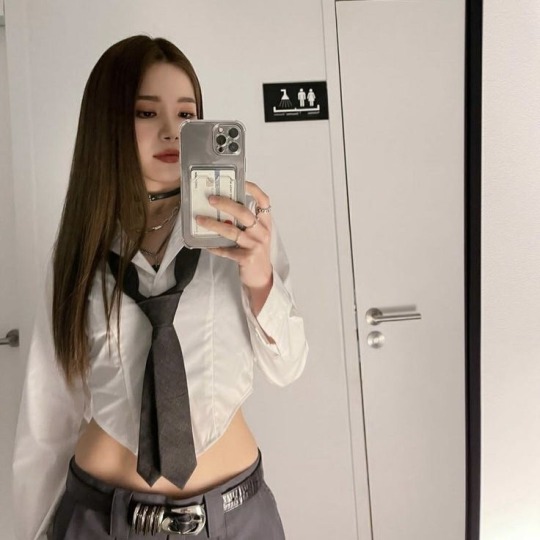

ㅤ݄ㅤ ㅤ 𝗀𝖾𝗅𝖾𝖾ㅤ ㅤ ⸄ㅤ ㅤ𝗋𝖺𝗂𝗌𝗂𝗇ㅤ ㅤ عن
𝖼𝖺𝗋𝗍𝖾𝗌ㅤㅤㅤ𝐟✿𝐫ㅤㅤㅤ˴ㅤ ㅤ𝗒𝗈𝗎 ͏ ͏ ͏ ͏ ͏ ͏ ͏ ͏📄

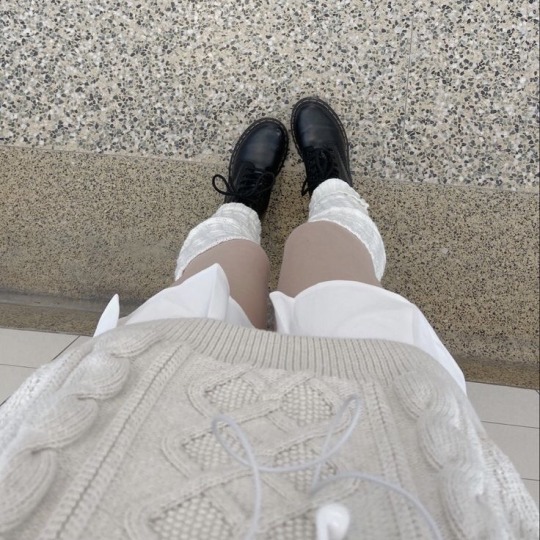





#୨୧ 𓏲ּ 𝒷𝓎 ℱ੫𝒾𝓇𝓎𝓉𝓀𝒾𝒾#div cr roseraris#divider by roseraris#aesthetic moodboard#rp edit#kpop layouts#kpop messy#kpop moodboard#kpop packs#kpop#kpop icons#gg layouts#kpop gg#mamamoo moodboard#mamamoo layouts#mamamoo packs#themes made by me#solar moodboard#solar layouts#solar packs#symbols#ᵎᵎ © f4irytki#krp+themes#𝖼𝗅𝗂𝖼𝗄ᵎᵎ © ☆ f4irytki#gg moodboard#divider by v6que#divider cr plutism#krp+theme#gg moodboards#kpop layout
27 notes
·
View notes
Text


vector babysitting creme enjoyin the eclipse. I couldn't figure out how to give vector pants so I just gave em a long shirt or a dress thing.
Source: my friends are funny
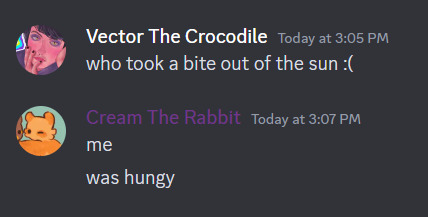
#eclipse#eclipse 2024#solar eclipse 2024#creme the rabbit#creme and cheese#vector#vector the crocodile#sonic#myart#sonic fanart#sonic art#edit after posting#i just realized i left a tiny @ symbol at the bottom#please ignore it lmfao#unrelated footage
50 notes
·
View notes
Text
My amazing art of the solar eclipse!!
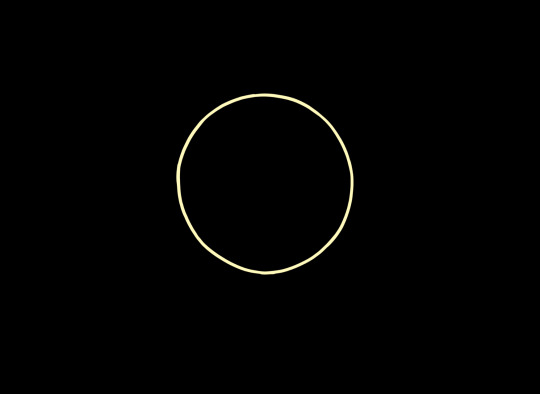
Stunning!!!
#solar eclipse#sun#moon#celestial event#space#stars#funny#humor#humour#lol#joke#satire#dark humor#dark humour#(literally)#hehehe#(also I don’t THINK this is a symbol for anything but if it is lemme know)
29 notes
·
View notes
Text

#solar system symbol#solar system#symbols#astronomy#astrophysics#astrophotography#space science#night sky#physics#mathematics#biology
35 notes
·
View notes
Text
Okay okay so, the symbol of Yiling Wei Sect. I realized what it should be.
So like, with the Wen Remnants and the Yiling Laozu; the Qishan Wen had the sun with flames as their symbol, Wei Wuxian wears black and red with flames: the Yiling Wei Sect should have a solar exclipse as their symbol.
Partially to represent the remaining Wens, partially to symbolize that Wei Wuxian's darkness overtook the sun (the Qishan Wens) during the war.
It just feels right. It has the sun and flame symbology I like while also keeping the dark aesthetic needed.
#Yiling Wei Sect AU#Yiling Wei Sect symbol: solar eclipse#the Wen Remnants#Yiling Laozu | Yiling Patriarch#Wei Wuxian | Wei Ying#mo dao zu shi#mdzs#queue
48 notes
·
View notes
Photo







Marian Wawrzeniecki’s swastika signatures
#marian wawrzeniecki#slavic#swastika#polish art#svastika#solar symbols#early slavs#interesting that he wasn't consistent with the direction of arms of his swastika#i like the swirling-broken ones#my upl
13 notes
·
View notes
Text



𓆉 It's okay to not be fine 𓇼

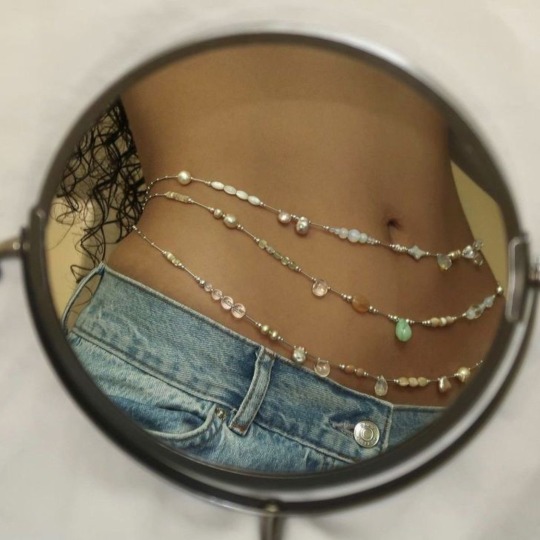

. ࿙࿚ . ࿙࿚ ⭒ 𓈒 ◌ 𓈒 ࿐ํ 𓈒 ◌ 𓈒 ⭒ ࿙࿚ . ࿙࿚ .



#yuqi-luv#symbols credits to v6que#solar#mamamoo#solar mamamoo#mamamoo gogobebe#kpop#kpop moodboard#solar moodboard#mamamoo moodboard#gg icons#mamamoo icons#solar icons#blue moodboard#yellow moodboard#white moodboard#beige moodboard#creme moodboard#cream moodboard#red moodboard#pink moodboard#beach moodboard#summer moodboard#sea moodboard#modern moodboard
44 notes
·
View notes
Text
The myth of Apollo (4)
As with Dionysos previously (see here), the Dictionnary of Literary Myths of Pierre Brunel offers two different articles about Apollo. Here is the loose (but free !) translation of the second one, « Apollon, the mythical sun ».
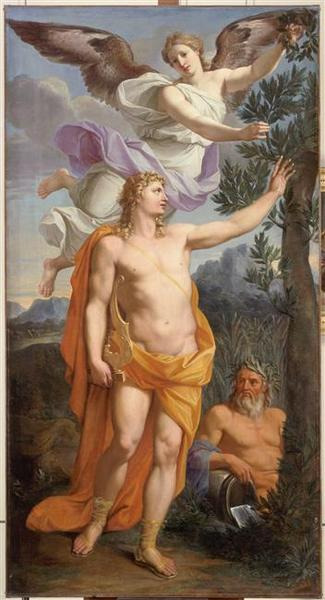
APOLLO, THE MYTHICAL SUN
Pontus of Tyard wrote in 1552: “Of all the poetic gods, Apollo is the one that has been the most disguised by the fables and the etymologies of his name.” The mythical figure of Apollo, which has been turned in Western literature as one of the most conventional figures there can be, was considered by ancient mythographers as an extremely complex character, because he was given many names and many properties. Apollo is first and foremost an universal archetype of the Divine, of which literature kept – alternatively as much as indiscriminately – three main names: Apollo(n), Phoebus, Sun. The chronological evolution of the god allows us to isolate and separate the solar god (as a symbol) from his mythological adventures, since the solar Apollo is more present within poetry than within legends.
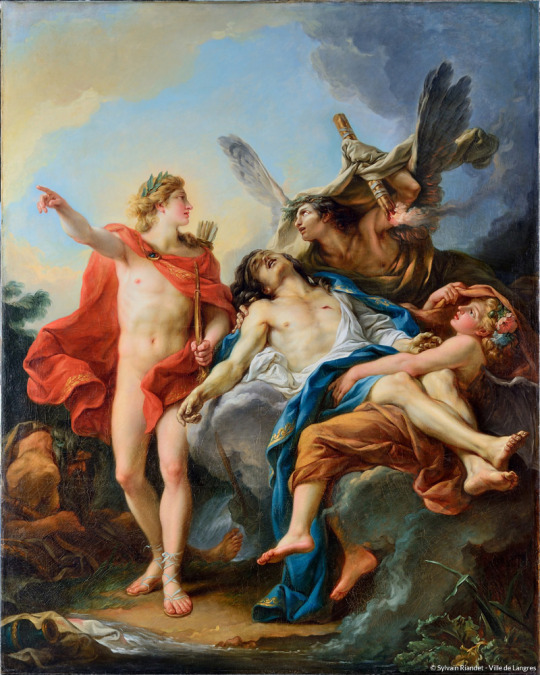
I/ The names of the Sun
In the Platonic tradition, all the way to the end of the Renaissance, numerous significant and diverse etymologies were invented for Apollo, all reflecting the various functions of the solar god. Within the name Apollo(n), interprets can read as much an idea of destruction as an idea of freeing (from the verb “luô”, to untie) or purification (from the verb “louô”, to clean). This reflects the “drying” effects of the sun, which can be negative or positive – and thus is a survival of the ambiguity of the archaic god.
The interpretations found within the “Cratylus” (see the previous part of “The myth of Apollo”, “The Antique Apollo) allow us to define the four main attributes of the god: medicine, divination (both seen as manifestations of “purification”), music and the art of shooting with a bow. The name Phoebus has been associated by Isidor of Sevilla with the endless youth of the ephebe (e-phoebus), while Cartari (in 1556) linked it to the vital light (phôs, light, bios, vie). For Platon, the name of “Sun” within Ancient Greek meant he who “nuances” the colors (“helios”, the sun in Greek, derived from “aïoleïn”, to nuance) ; and all the ulterior commentators assimilated it with the Latin “Sol”, tied to the adjective “Solus” (the sole, the unique, the lonely), a link which can be found in the neo-Latin languages (in French “soleil” and “seul”, for example). Cartari, who was follow the works of Plotin and Macrobe, linked this precise etymology to the Greek name of Apollo that he translated as “he who is not multiple” (“a” as a privative + “polu”, many) – highlighting again the important idea of unity within the idea of the sun-god.
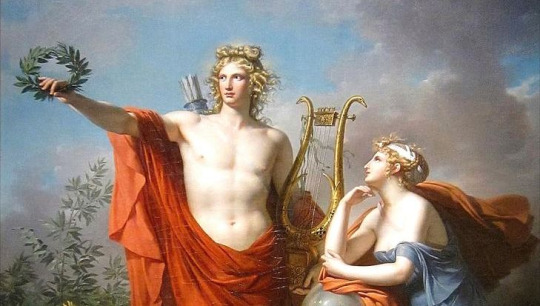
II/ Main attributes
The mythographers of Renaissance made a very useful synthesis work that offers us in their roughly definitive state the various interpretations of the myth of Apollo, compiling together the commentaries from Antiquity, the interpretations from the Middle-Ages, as well as the point of view of some Oriental civilizations. Within his “Images of the Gods” (1556), Cartari divides the solar myth in a series of elements linked together as part of a long allegorical chain:
1) The sun represents at first, in the diversity and universality of its effects, an archetype of the Divinity. The Assyrians assimilated it to Jupiter as the soul of the world (because through all the other gods, it was always him who was evoked). As such Macrobe noted in his “Saturnals” that all theology always returned to the worship of the sun.
2) As a symbol of eternal youth, as the allegory of the always-new day, of the always-resurrecting light, Apollo is depicted as beardless (except for the Assyrians) and is associated with Dionysos.
3) Because of its central position within the Universe, it is called “heart of the heaven”, by analogy with the vital function of this “pulsing” organ within the human body. The sun is the source of light that communicates their movements to the other astral bodies. It is why Apollo is sitting in the middle of the nine Muses, allegories of the nine celestial sepheres, and with them he embodies the Harmony and the Universe, as a symbol of “symmetry and concordance” (according to Tyard). As such the Music of the Spheres, that R. Lulle will represent through the “Great Lyre of the Universe”, is reflected in Apollon’s association with Music and Poetry (Poetry which was originally simply the art of singing).
4) The rays of the sun are depicted by the arrows of Apollo (just like by those of his sister Diana). They can penetrate the very core of the earth – it is why there is an archaic tradition according to which Apollo is a chthonian or infernal god (and can sometimes be called Hecate, since the primitive gods were without genders).
5) It is due to the purgative and drying effects of his rays that Apollo is also the god of medicine. Mythographers tie this function of the god to the fable of the snake Python killed by Apollo soon after his birth: they assimilated Python to the mythical Flood, as a principal of morbid humidity wrapped around the earth.
6) The attribution of the laurel to Apollo, and the fable of Daphne, are explained by the medicinal virtue of the plant, the always-green plant that never rots, and that the mythographers saw as a symbol of Health. The laurel is also tied to the alchemical symbolism of Humidity, because Daphne was metamorphosed thanks to the intervention of her father, a river-god.
7) Finally, Apollo is the god of divination, because he is the eye of the sky, he sees all and he reveals all secrets (hence why in mythology Apollo was the one who denounced the adulterine love of Venus and Mars). He has the role, within the Universe, of the eye within the human body – he is the “spy of the intellect”, the “censor” or the “rector”, and his eminent position makes him a sign of omnipotence. Cartari described a hieroglyph that designated the sun as a scepter surmounted by an eye – which would identify the mythical sun with the idea of royalty.
Such a synthesis – within which each of the god’s main attributes were defined and linked together – as the interpretative model which was used as a basis for all ulterior poetry. For example take Du Bartas: in his “Sepmaine ou Création du Monde », in 1578, the sun, which is not a god anymore but a mere « ornament of the sky », is always designated by metonymy through a series of names that resume all the attributes of the solar god in his cosmic function: Phoebus with gold hair, the blond Titan, the Torch of Laton, the Archer, Apollo giver-of-souls, the Fountain of Heat, the Life of the Universe, Giver-of-honors, King of the Sky, Eye of the Day, Censor, Torch of Delph, Torch of Delos, he who “makes the face of the world young again”. In a parallel way, from Cartari’s work, the different aspects of the character will be slowly simplified until he simply becomes the god of Poetry, crowned with both sunrays and laurel leaves, sitting among the Muses on top of mount Parnassus, always holding his lyre (which can sometimes represent him in his entirety), distilling the poetic inspiration under the shape of the Hippocrene spring (created from Pegasus’ hoof), a spring that Ronsard will describe as “the fountain of verses”.
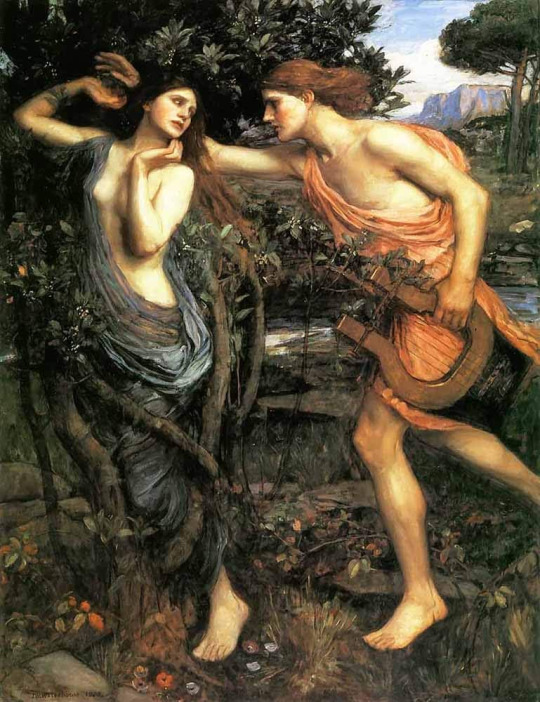
III/ The philosophical Sun
Symbol of the Philosophical Gold in the alchemical tradition, uniting the fundamental opposites that are the fire and the water, the dry and the wet ; or a symbol of the divine creative soul within Orphism and Pythagorism, the go of Poetry s the very image of all creation within the Neoplatonic literature, in which Apollo with his lyre is always associated to his “mortal double”, Orpheus. Within the Renaissance, Apollo was the god who inspired the “Poetic Fury”, without which the lyrical production cannot be: it is under his influence that (according to Ronsard’s Hymn to Autumn) the spirit can “penetrate the secret of the heavens” and the soul “rise among the gods”. It is under the sign of Apollo that the soul finds back its celestial origin through the effects of the divine enthusiasm (from the Greek “theos”, god): this is the Orphic origin of poetry. For Ronsard and the poets of La Pléiade, the “inspired Poet” is both the “prophet” and the “priest” of Apollo (hence why in the 16th century it was believed that the Sibyls and the oracles were exceptional poets).
This Neoplatonic interpretation of the myth, which confuses the two main attributes of the god, prediction and lyrical art, this same tradition that shaped the image of Apollo we have today, relies on the commentary by Marsile Ficin of “The Symposium”, which divines four different divine “furies”, associated with four patron-deities. First is the highest, the poetic fury, which is caused by the Muses ; second is the “mystery fury” or the sacerdotal fury, which proceeds from Dionysos ; third is the prophetic fury, given by Apollo ; fourth is love, and it originates from Venus. Despite the distinction marked within this text between the Muses and Apollo, poets usually invoke indifferently one or the other – the god understood as the “universal principle” and the Muses as allegories that represent the individual repartitions of the poetic virtues. It should be noted that within the Neoplatonic context, Apollo is not opposed to Dionysos – rather their functions are complementary. The god of divination, who is also the god of the penetration of divine secrets, forms a couple with the god who initiates humans to the divine Mysteries ; it is to the point that they are called “brothers” by Pontus of Tyard, who explains the epithet of “Delphic Apollo” by a fake etymology “adelphos”, “brother”, for the “fraternity considered between Denys (Dionysos) and Apollo”.
For the Neoplatonicians, if Apollo is one of the poles of the duality of the world, he is rather opposed as the One, as the universal principle, to Diana, who embodies Nature – that is to say the Multiple. According to the Platonic idea taken back by Giordano Bruno in “Eroici Furori” (1585), the Nature (Diane) is the mirror of the God (Apollo). Apollo is the absolute light whose essence must be hidden, who blinds and kills those that see it directly, and thus he can only be perceived through his reflection. A variation of this idea, developed by Léon Hébreu in 1535) made Apollo the “simulacrum of the divine Intellect”, while the Moon was the “simulacrum of the soul of the World” and acted as an intermediary between the divine plane (the intelligible world) and the corporal plane (the sensible world). This conception has been very influential in term of literary posterity, because it means in a very explicit way, that the sight is a sense that must be valorized: the sensitive vision, the one of the eye, is to be identified with the intellectual vision, the one that allows thanks to the spirituality of the light to distinguish the beautiful from the ugly and the good from the evil. The supremacy of the eye above all other senses will be abundantly developed, in poetic and metaphorical ways, from the 16th to the 17th centuries. Even within the anatomical descriptions of the baroque poets, the eye appears as an intermediary between the sensible and intelligible world, as a double of the Sun, whose light shines upon the minds as much as upon the bodies.

#the myth of apollo#apollo#phoebus#greek mythology#poetry#renaissance#greek gods#sun#symbols#symbolism of the sun#solar myth#roman mythology#diana#dionysos#symbolism
15 notes
·
View notes
Text



#blue roses not real#i had to work hard to try to form symbolism that didn't seem like it was just jacking solar system's writing and it still seems like it--
27 notes
·
View notes
Text
so I speedran this thing not 3 hours into the poll and it took me a good 4-6 hours to find flowers and doodle'em and tumblr probably butchered the quality of the image buuuut here's our end product!
Behold:

Quick list of flower meanings (I'm barely restraining myself from rambling):
Belladonna, pink: silence
Bluebell: Constancy
Michaelmas Diasy, white: farewell
Geranium (similar to Oak-leaved variety), red: true friendship
Currant, red (berries): thy frown will kill me
I wanted to include other flowers, like the Asphodel (rememberance beyond the tomb), Everlasting (enduring rememberance), and Nagoya (wanderer), but I unfortunately did not have the time. Still, this was fun and I actually really enjoyed myself! I have Eclipse's bouquet to do next, and maybe I'll take requests on other characters? Not sure about that yet, we'll see. Anyways, here's this!
(link for flower symbolism doc is here if anyone wants that!)
#crappy doodles#tsams#tsams solar#flowers#i had so much fun with this!!!!#I love flowers so much#and i love symbolism#AND i love tsams!#so this was a nice way to incorporate my interests into fandom#my personal favorite flower out of these is the geranium#they took a bit to figure out with the shading but they're so so so pretty#anyways
8 notes
·
View notes
Text

In western mythos, we are mostly familiar when a feminine moon and masculine Sun. In certain traditions around the world, especially in folklore concerning solar eclipses, the sun is instead feminine and the moon is masculine:
In Norse mythology, the solar goddess Sol and lunar god Mani are sister and brother.
In Tahitian myth, the Sun goddess and mother of rice, Padi, and the dark moon (each moon phase has varying names) are lovers who are said to be getting ‘lost in the moment’ when they create a solar eclipse.
Inuit lore has told of the Sun goddess Malina being chased across the sky by her brother, the moon god Igaluk. Occasionally he catches up with her for a brief reunion and everything goes dark.
In the indigenous Euahlayi stories from Australia, the Sun is a woman, Yhi, and the moon as a man, Bahloo. Yhi falls in love with Bahloo and chases him across the sky. Yhi tells the spirits that hold up the sky that if they let Bahloo escape then she will plunge the world into darkness. So during a total solar eclipse, medicine men traditionally chant to connect with the spirits of the sky to allow the moon, Bahloo, to continue to enchant and Yhi in this celestial chase.
I made this illustration adapted from my tattoo flash for Magic PJ’s PMU & Tattoo to share this with you.
#mythology and folklore#solar eclipse#sun goddess#traditional tattoo#celestial#whimsicore#astro art#world mythology#folklore#alchemical symbolism
7 notes
·
View notes